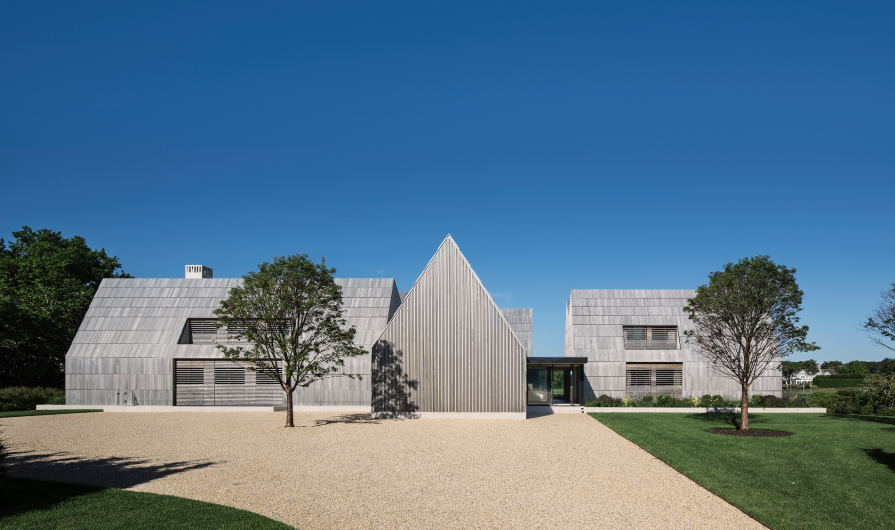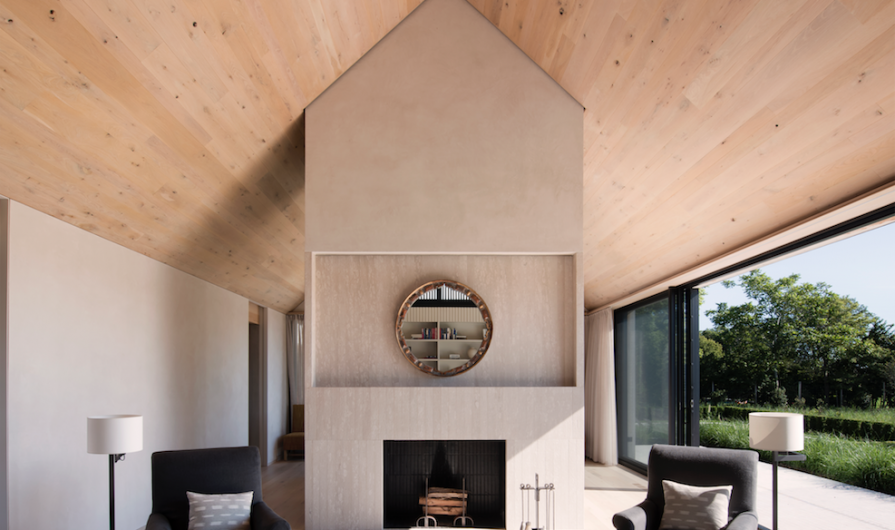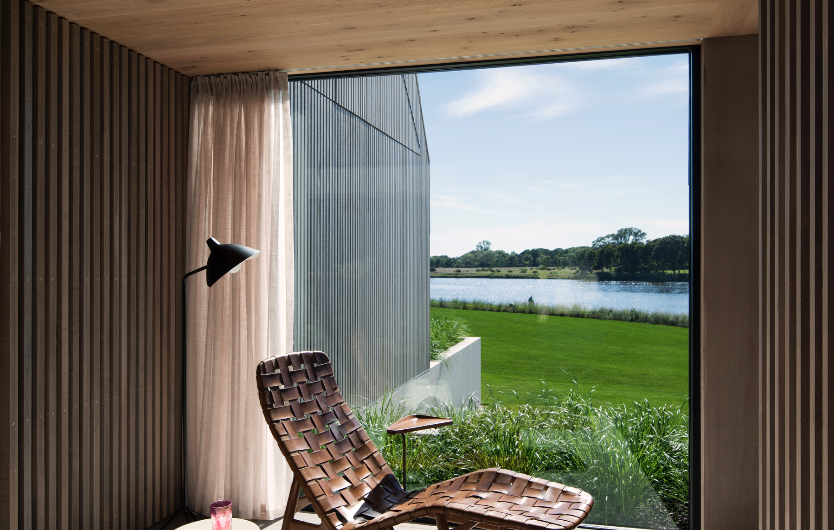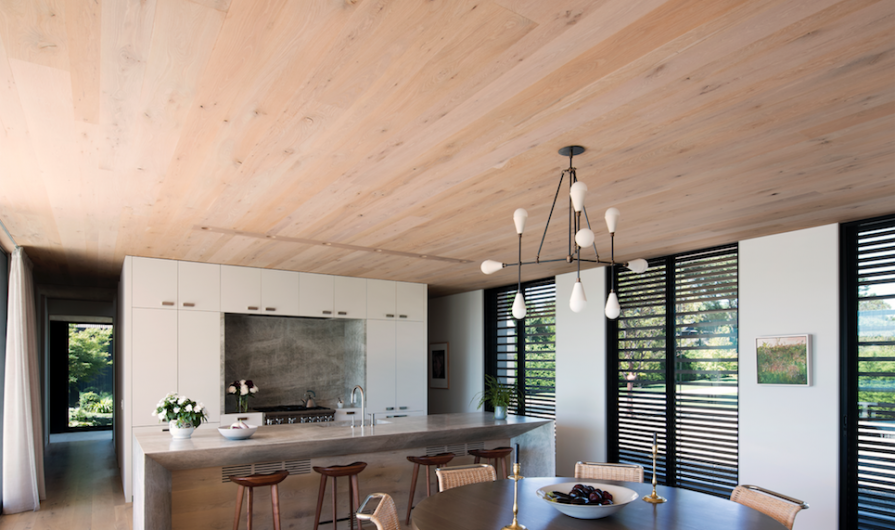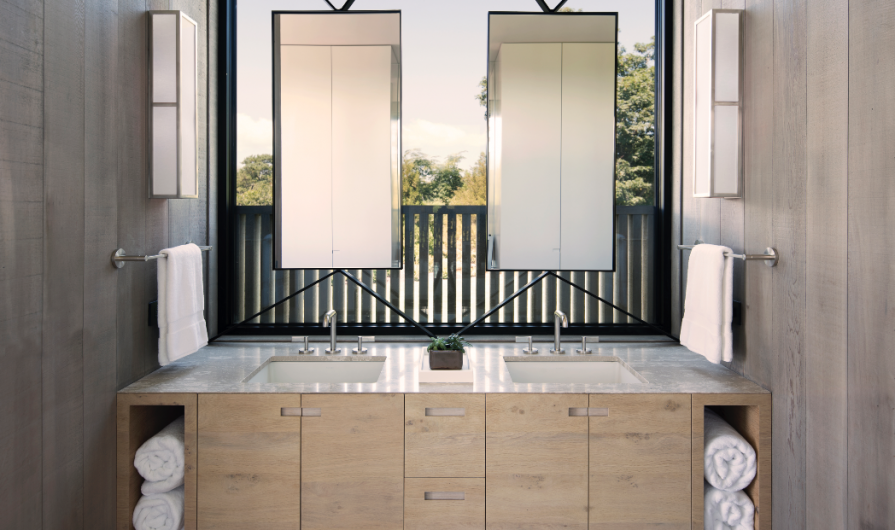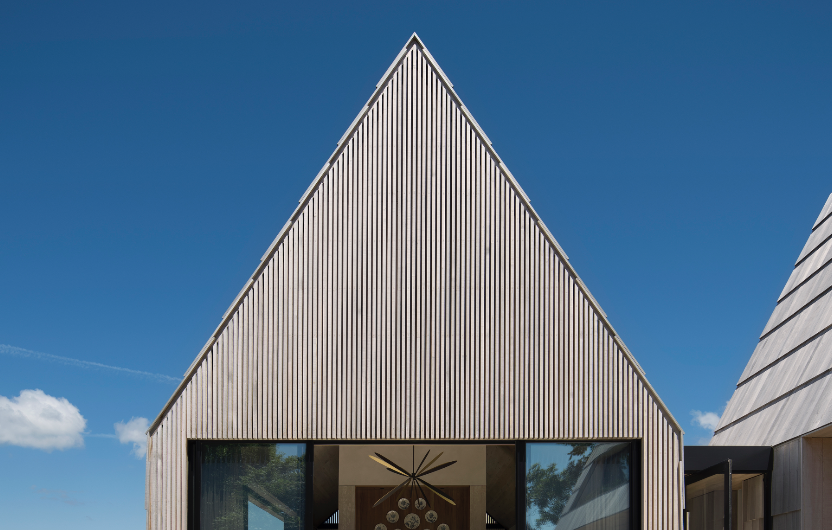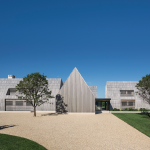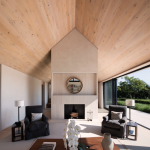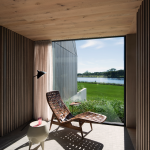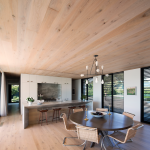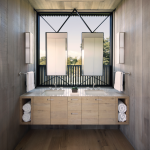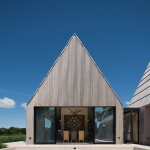Limited materials palette unifies spaces and responds to local climate
East Hampton, NY
A couple with property on a cove overlooking the Atlantic Ocean asked for a house that would be just as comfortable for two as it would on busy weekends when the couple was entertaining their children, grandchildren and guests.
To also instill the desired sense of comfort and peace, the design needed to blend with the pastoral setting and vernacular building traditions; i.e., predominantly shingle-style homes and barns that are often added to over time. Precedent studies suggested that referencing New England-connected farms in an innovative way could achieve both goals.
The architectural style of the house was applied to subsequent buildings to unify the assembly, but partitions within provided the necessary separation between uses: house to kitchen, kitchen to shop, shop to barn. One volume was often offset or rotated from the next to provide greater access to light, air and privacy from the other functions. Following that example, the program of this house is divided into the owners’ bedroom and office, eat-in kitchen and family room, formal living and dining rooms, and guest rooms.
The spaces are arranged around a courtyard to create visual and physical connections between them, but those connections can be broken by large sliding doors. Each structure has an independent mechanical system allowing it to be shut down when unoccupied. This allows the house to expand and contract to meet changing needs. Whether the owners are alone, hosting dinner guests, or have a full house of overnight guests, the house perfectly meets their requirements.
As with connected farms, a limited palette of materials and details unifies the various spaces and responds to the local climate. The cedar shingles common to local buildings are scaled up to the size of boards to cover the roof and sidewalls. Cedar screens provide privacy and filter light. A marble plinth filled with sand elevates the house above the floodplain while also creating drywells to accept stormwater runoff. Oak floors and millwork unify the interior spaces.
The design repurposes the historic typology of the connected farm to suit the timely needs of the site and the family. By acknowledging the area’s history and tradition of building, the home is an evolution of this vernacular.
ARCHITECT
East Hampton, NY
STRUCTURAL ENGINEER
Steven Maresca
Hampton Bays, NY
GENERAL CONTRACTOR
John Hummel and Associates Custom Builders
East Hampton, NY
PHOTOGRAPHY
Bates Masi + Architects
East Hampton, NY

